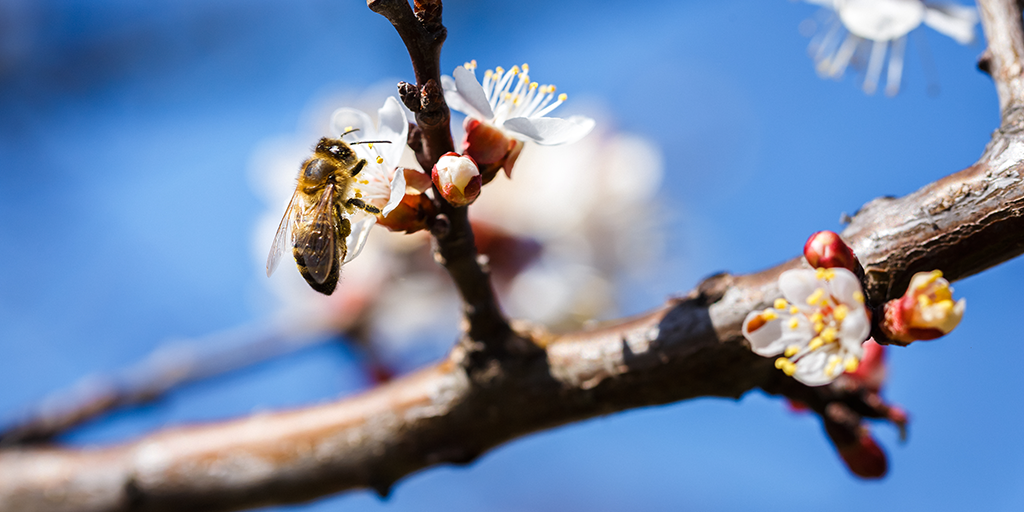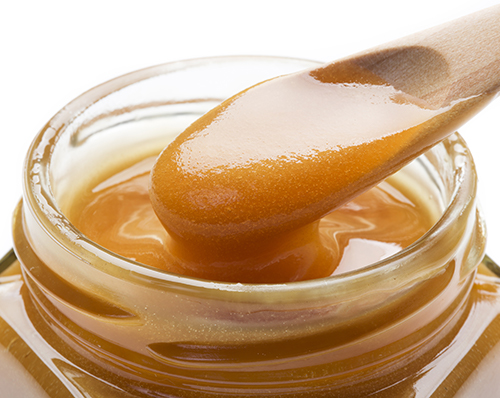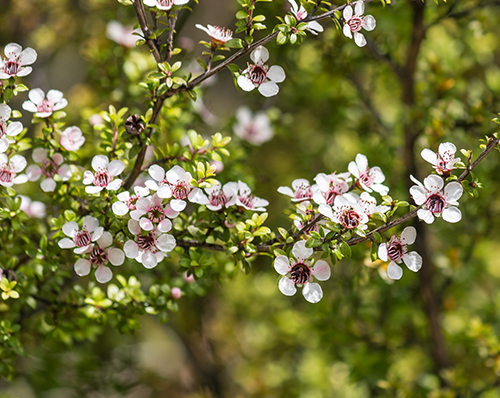Manuka honey is derived from bees that forage on the Manuka bush (Leptospermum scoparium) and has been demonstrated to exhibit significant non-peroxide antimicrobial activity (NPA). This antimicrobial activity is in addition to the peroxide activity found in honeys that contain glucose oxidase and is thought to be unique to Manuka honey. The sum of the peroxide activity and the non-peroxide activity is known as the total activity (TA).
Research programmes (Figure 1, shown right) have shown that there is a correlation between the NPA and methyglyoxal (MGO) in Manuka honey.
MGO in Manuka honey is derived from dihydroxyacetone (DHA) which is naturally present in the nectar of Leptospermum scoparium. In the presence of sugar, DHA undergoes a chemical reaction to form MGO, a process which is driven by the higher temperatures found within the bee hive. Laboratory tests have shown that MGO displays antimicrobial properties (2) and its concentration can be related to the strength of phenol that would kill a similar number of bacteria. For example, 83 mg/Kg of MGO in Manuka honey would have the same antiseptic strength as a 5% phenol solution.
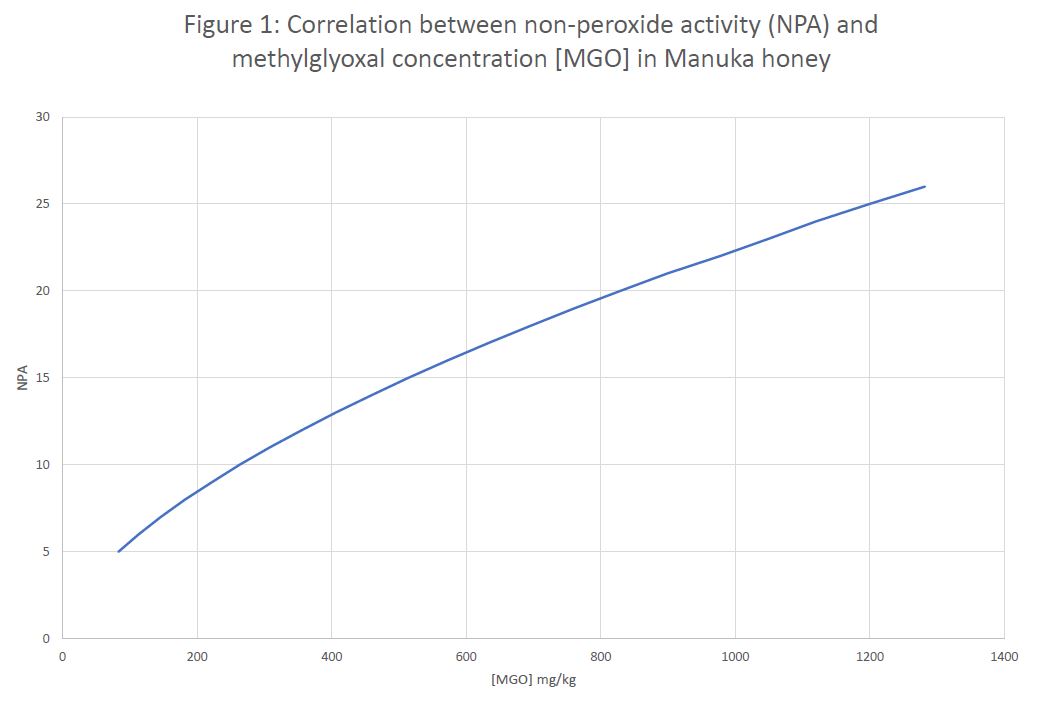
This phenol equivalence is often referred to as the TA (with peroxide activity) and the NPA (without peroxide activity). For example, an NPA 5+ honey would have a phenol equivalence of greater than 5%. However, only the antimicrobial activity that can be ascribed to MGO (the NPA) is a particular property of Manuka honey. Hence, the MGO concentration and the non-peroxide activity are rightly used to grade Manuka honey according to is antimicrobial strength. This is also the basis for the UMF quality mark where the numbers associated with UMF (e.g. UMF 5+) and NPA (e.g. NPA 5+) can largely be considered as directly comparable, at least in relation to the concentration of MGO that the honeys contain.
The science at this current time cannot differentiate between natural and synthetic MGO or DHA so there is a risk that the apparent quality of Manuka honey can be raised by adding MGO and/ or DHA. However, the ratio of MGO to DHA can indicate when one or the other has been added. We also know the approximate natural ranges of DHA and MGO and very high values for either would be suspicious.
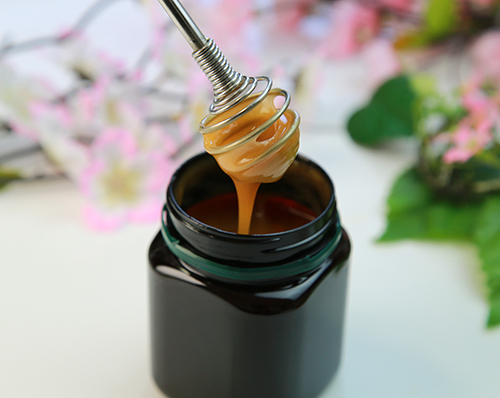

The latest research (3) has shown that Leptosperin is a highly effective marker for distinguishing between Manuka (Leptospermum scoparium) honey from New Zealand and honey derived from other native New Zealand plants, such as Kanuka (Kunzea ericoides). Plants of the same genus and/or species growing in non-New Zealand territories have similar nectar composition and this is heavily influenced by the environment/geology in which the plants are grown. Authenticity markers for Manuka honey are also known to occur in entirely unrelated plants. For example, 3-Phenyllactic acid (3PLA) is a constituent of nectar from Scottish heather (Calluna vulgaris). It is therefore important to take authenticity test results and traceability information together when establishing the authenticity of New Zealand Manuka honey.
If you need any further advice, please contact Dr Adrian Charlton (adrian.charlton@fera.co.uk).
(1) Molan PC, Russell KM. (1988) Non-peroxide Antibacterial Activity in Some New Zealand Honeys. J. Apic. Res. 27, 62–67
(2) Adams, CJ, Manley-Harris, M & Molan, PC. (2009). The origin of methylglyoxal in New Zealand Manuka (Leptospermum scoparium) honey. Carbohydrate research. 344. 1050-3. 10.1016/j.carres.2009.03.020
(3) Charlton, AJ, MacArthur, R, Donarski, JA, Dickinson, M, Braggins, T, Jaine, J & Wright, A Statistical Analysis of Metabolite Data for the Determination of Manuka Honey Authenticity. This Is Manuka Honey, Auckland War Memorial Museum, Auckland, NZ, 9th August 2016
Why is Manuka honey so expensive?
Manuka honey in its purest form is 100 times more expensive than normal honey. It is know to be more earther and richer than normal honey. Find out more by watching the video below.



